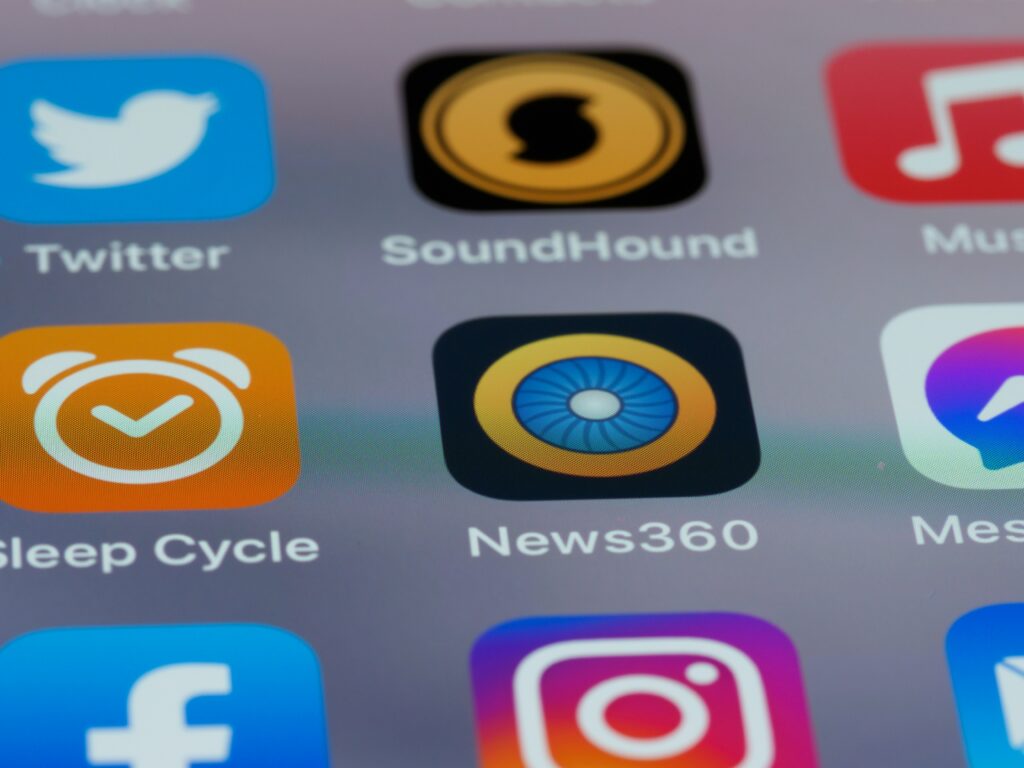Introduction: News Moves at the Speed of Scroll
The days of waiting for the evening news broadcast or tomorrow’s paper are long gone. In their place, we have something faster, rawer, and constantly updating. Social media has pulled newsrooms out of their towers and into the crowd, where breaking stories often show up first as blurry phone videos, live tweets, or captioned clips.
The shift from traditional gatekeepers to real-time contributors has rewritten how journalism works. Now, anyone with a smartphone can be the first to break news. Platforms like X (formerly Twitter), TikTok, and Instagram aren’t just social—they’re the new front page. Stories now spread not because a newsroom deemed them headline-worthy, but because they struck a nerve and caught traction.
This change brings speed, reach, and a bigger role for the public in shaping what gets seen. But it also raises the stakes: context can go missing, nuance gets lost, and once things go viral, fact-checking often trails behind. Still, for millions, social media is where they first hear what’s happening in the world—it’s their daily paper, news ticker, and editorial board all rolled into one.
Social Media as a Breaking News Engine
Twitter—now X—still sets the pace when it comes to breaking news. It’s raw, fast, and unfiltered. A blurry video, a one-line post, a shaky live stream—these are often the first signals that something big is happening. Instagram Stories adds context with visuals, while TikTok takes it further with reactions, commentary, and quick analysis. Forget waiting for a press release. If you’re online, you already know.
What’s changed is who’s holding the camera. It’s not just journalists anymore—it’s protestors, bystanders, nurses, truck drivers. Citizen reporters on the ground now beat traditional outlets to the story, offering firsthand footage before the news cycle even registers. This immediacy builds trust with some, but also opens the floodgates to misinformation.
And that’s the tradeoff. Viral speed is ruthless. Facts often come later—if at all. Something catchy can hit millions before anyone double-checks if it’s real. In this ecosystem, being first sometimes matters more than being right. The challenge for both creators and consumers? Stay alert. Share smart. Don’t feed the chaos.
Algorithms and News Visibility
In 2024, it’s not journalists or headlines deciding what news reaches you—it’s the code. Algorithms now act as gatekeepers, lifting some stories sky-high while letting others vanish in the scroll. Engagement is the currency: the more clicks, comments, and shares a post gets, the more likely it is to spread, regardless of its accuracy. News that sparks outrage or tribal loyalty travels faster than balanced reporting.
The result? Personalized echo chambers, built by your past behavior. Everyone sees a different version of reality—sliced, filtered, and adjusted to align with what algorithms think you want. This isn’t just about convenience. It’s about influence. People aren’t just getting different stories; they’re forming different truths.
Platforms are starting to own up. They’re rolling out tools for flagging misleading content, labeling AI-generated media, and slowing the spread of sensational misinformation. But for every new safeguard, there’s a fresh way to game the system. Platform responsibility is evolving fast—but it’s still playing catch-up with the powerful mix of tech, psychology, and real-time attention economies.
Influence vs. Information
Online, influence often speaks louder than credentials. In 2024, a single viral comment can shape the narrative before traditional newsrooms even wake up. Call it commentary, branding, or personal soapboxing—whatever the label, it’s driving perception at scale. And when a clip garners millions of views, the speaker can quickly jump from content creator to accidental news authority.
This shift carries weight. Audiences are forming opinions based on reaction videos and live takes. Some influencers are careful curators, others just fast with a phone and a point of view. The danger? Viral speed doesn’t allow much time for fact-checking. We’re more likely to see what feels right than what is right.
There’s also a thin—and blurry—line between activism and misinformation. When emotional appeal meets simplified storytelling, facts can get edited out. It’s not always intentional. But it changes what people believe, and often, what they act on. The result is a digital space stacked with passionate voices, but not always balanced ones.
For creators, the takeaway is clear: know your impact. And for viewers—curiosity and skepticism should always travel together.
Journalists and Newsrooms in the Social Era
Mainstream Media Meets the Feed
Major news outlets are no longer confined to television screens or printed pages—they’re active participants in the social media ecosystem. Platforms like Twitter, Facebook, and Instagram serve as distribution channels, amplifying content far beyond traditional audiences.
- Real-time publishing: Many journalists now break stories on Twitter before they hit the homepage.
- Content reshaping: Headlines and visuals are adapted to suit platform preferences, such as quote cards, short-form videos, and interactive polls.
- Verification transparency: Newsrooms use posts to explain how a story was sourced and verified, building trust with readers.
Social Listening as Story Fuel
Social media isn’t just for outreach—it’s also a tool for listening. Reporters monitor conversations, hashtags, and location-based posts to uncover emerging stories and trends. This approach crowdsources leads and often surfaces voices underrepresented in mainstream coverage.
- Hashtag monitoring helps detect breaking incidents earlier than traditional tip lines.
- Geotagged content reveals on-the-ground perspectives from eyewitnesses.
- Sentiment analysis tools provide insight into public opinion on unfolding events.
Challenges in the Click-First Era
While social media offers speed and access, it also introduces serious risks for working journalists.
- Online harassment: Many reporters, especially women and marginalized voices, face coordinated attacks and threats.
- Pressure to publish: The race to be first sometimes overrides the imperative to be accurate.
- Blurred lines: Between personal and professional accounts, boundaries are harder to maintain in the public eye.
The modern newsroom must balance agility with accuracy, and presence with protection. In the social era, journalists are not just content creators—they’re digital navigators in a landscape that evolves by the second.
Trust in the Era of Clicks
Trust in news is at an all-time low, and not without reason. Legacy media has taken hits for partisanship, paywalls, and sensationalism. Social platforms? They’re riddled with algorithm-fed echo chambers, unverified claims, and a short memory for facts. It’s no wonder audiences are skeptical.
Out of that skepticism, something new is taking shape: the rise of independent voices. Newsletter journalists, Substack authors, and niche fact-checkers are carving out spaces that feel more transparent and less tied to corporate agendas. These creators often build direct relationships with their readers—and that trust is earned, not assumed.
For readers trying to cut through the noise, a few habits go a long way. First: check sourcing. If a claim feels too perfect—or too outrageous—see who’s backing it. Cross-reference. Diversify your news diet so you’re not just swimming in confirmation bias. Finally, slow down. Virality favors speed; truth takes a beat.
In a digital arena where attention is the currency, skepticism isn’t cynicism—it’s survival.
Looking Ahead
The news cycle is no longer confined to television broadcasts or print deadlines—it’s dictated by real-time interaction, algorithmic placement, and now, increasingly, artificial intelligence. As we look to the future, both audiences and newsmakers must anticipate how social media will shape not just the delivery of news, but how it’s curated, consumed, and understood.
Trends to Watch in the Next Wave of News Consumption
As technology continues to reshape media habits, several emerging trends are reshaping how we engage with the news:
- AI-Curated News Feeds
Artificial Intelligence is becoming a central player in deciding what news we see. Whether it’s in-app recommended articles or personalized push notifications, AI is quietly narrowing the scope of public attention—both positively and negatively.
- Specialized News Communities
Instead of tuning in to mainstream headlines, many readers are turning to topic-specific groups or curated community spaces for analysis, conversation, and debate. Think Reddit forums, sub-stacks, or private social media groups focused on niche beats and regional stories.
- Interactive and Participatory Journalism
News consumers are not just reading—they’re commenting, sharing, and even contributing. Features like live Q&As, polls, and crowd-sourced investigations are pulling the public into the reporting process itself.
The Future of the Newsroom: Decentralized and Digital-first
Traditional newsrooms are evolving beyond broadcasts and print layouts:
- Decentralized Reporting Models
With journalists working remotely and distributing stories across multiple platforms, the physical newsroom is becoming less central—content strategy is driven by platform trends instead of press runs.
- Algorithm-Aware Editorial Strategy
Editors and publishers are tailoring headlines, thumbnails, and posting times to match platform algorithms, ensuring visibility and reach.
- Collaborations with Independent Creators
More media outlets are teaming up with social-native reporters, creators, and subject-matter experts to reach new audiences and provide authentic, platform-specific storytelling.
For related insights, check out Weekly Media Highlights: Key Stories You Need to Know.
Conclusion: Adapt or Get Left Behind
News isn’t dead. It’s just switching lanes. What used to show up on the morning paper now unfolds in real time, on phones, under comment threads, or through a blurry clip from someone’s camera roll. The platforms have changed, but the need for good information hasn’t gone anywhere.
Sure, social media is messy. Algorithms echo our biases, bad takes go viral, and timelines bury the important stuff under memes. But if you care about what’s happening in the world, you can’t afford to write it off. These platforms are now core to how we receive and relay news—whether we like it or not.
The future of news isn’t just about adapting to new tools. It’s about using them wisely. Question what you see, learn how stories get shaped, and don’t just scroll—share with intent. Those who can navigate the noise will shape the signal.




